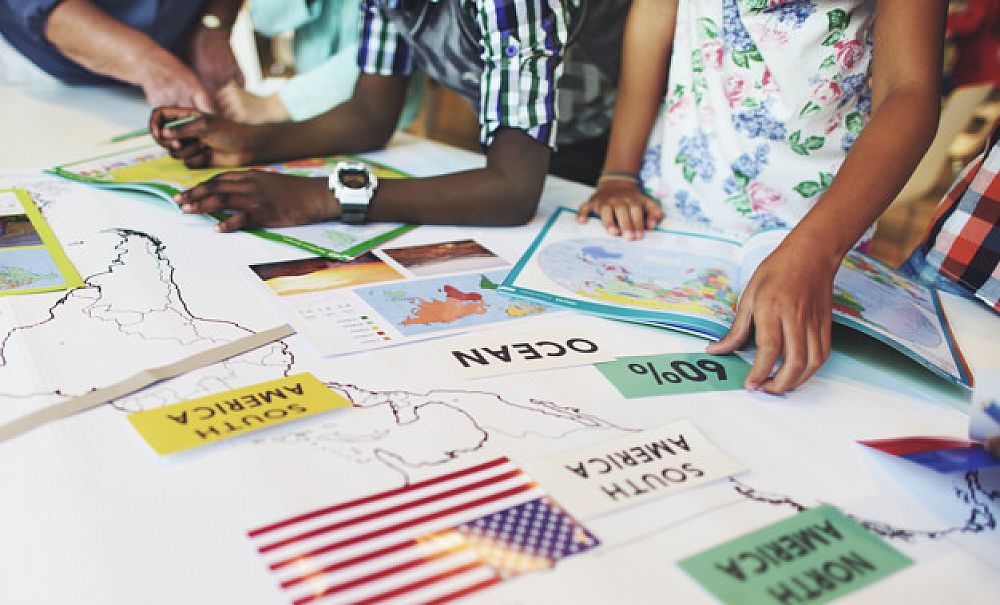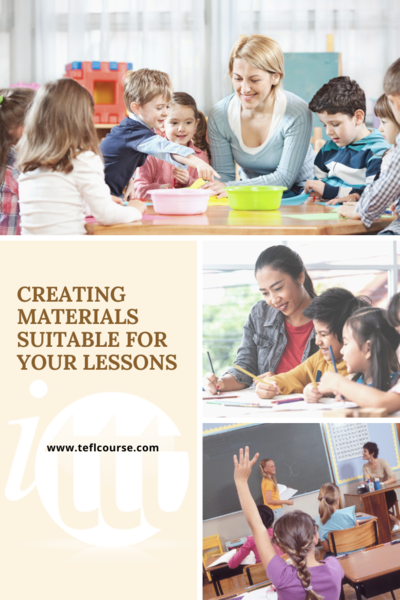Creating Materials Suitable for Your Lessons

Creating materials is, in my opinion, an enjoyable and resourceful pastime. Ahead of the lesson in which they may be used, I think it helps with the teacher's ability to understand learning objectives for a lesson. Furthermore, it provides clarity for children (if this is the age group of the class) and contributes significantly to their level of motivation. It is important to note that in creating something that will then be the basis for learning, various topics of interest can be covered. Similarly, materials may be geared towards exploring popular culture and therefore encouraging discussion of ideas or opinions. I think it is safe to say that whether a teacher is dealing with children or an adult group, materials that have been hand-made add an element of authenticity to learning.
Table of Contents
Do you want to teach English abroad? Take a TEFL course!
This post was written by our TEFL certification graduate Juliette L. Please note that this blog post might not necessarily represent the beliefs or opinions of ITTT.
Why create materials?
One idea for creating materials for a lesson could be for prefix and suffix purposes. That is to say, card pieces can be created with the root word, and then it would be up to a class (perhaps in groups) to piece together the root word with its prefix/suffix. Not only would such an exercise be an opportunity for learners to demonstrate their grasp of vocabulary, but it would develop spelling skills. Moreover, in understanding verb tenses and the use of suffixes such as 'ed', the cards would enforce the correct use of grammar for fluency in writing. An additional step to the activity could be that learners then have to create their own words. This would be a chance for the teacher to assess spoken fluency as well, as questions could be asked about word meanings and appropriate context.

Also Read: What is the difference between TESOL and TEFL?
Another reason to create materials may be simply for the possibility of making a lesson more fun. In this way, instead of only the teacher creating props, learners are allowed the chance to contribute something artistic. Alongside it, however, the teacher needs to make sure there is a purpose to the activity. Examples could include the creation of flashcards for word groups; opposites in English, for instance. Otherwise, the class could create a giant puzzle. The teacher could, alternatively, focus on word association. In order not to focus the lesson (or series of lessons) solely on the manual creation of the materials, it could be split up to focus on different elements. For instance, a part of a lesson could be made into a game in which learners have to give hints as to the word they are holding so that others may guess it. Therefore, the materials would be the basis for various branches of learning of the target language and provide a scope of possibilities for communication exercises.
Do you want to teach English abroad? Take a TEFL course!
Although the creation of materials can greatly impact the levels of motivation and engrossment in the subject matter, it has to be said that these can also be distracting. Learners may be too focused on making the materials if given the possibility; therefore, missing the learning focus throughout. Alternatively, if it is the teacher who has made them and learners use these in a lesson, they could turn into more of a game focus than anything else. Therefore, the conclusion can be drawn that if they are to be used, they should not be used in every lesson but sporadically.
Apply now & get certified to teach english abroad!
Speak with an ITTT advisor today to put together your personal plan for teaching English abroad.
Send us an email or call us toll-free at 1-800-490-0531 to speak with an ITTT advisor today.
Related Articles:
- Why You Should Take Specialized TEFL Courses
- The Best Countries to Teach ESL When You're 50+
- 3 Steps for Dealing with a Student with Challenging Behavior
- 10 Tips When Teaching English as a Foreign Language to Children
- How To Write The Perfect ESL Lesson Plan
- 4 Super Easy Tips for Teaching Vocabulary to Young Learners




